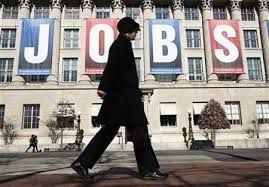 Steady job growth in the US is accompanied by a gruelling riddle about wages.
Steady job growth in the US is accompanied by a gruelling riddle about wages.
Unemployment ticked down to 5.8 per cent in October, according to data released on Friday, as another 214,000 positions were added. Pay is hardly budging, though.
In truth, full employment isn’t as close as it seems and real compensation costs are falling.
That suggests it’ll be a while before employers feel a need to offer more.
The country’s latest hiring snapshot was again solid.
Including an upward revision for August, it was the 49th month in a row with job growth and the ninth consecutive with seasonally adjusted gains of at least 200,000. Unemployment also continued its march downward.
The related survey of households indicated a stellar 683,000 job gains in October.
The improvement was broad-based, too, spread among food services, retail, health care, manufacturing, services, transportation and construction.
In theory, the shrinking supply of labour and increasing demand would lead to tension where wages are concerned.
Yet hourly rates inched up just three cents last month, and have increased only two per cent over the past year.
It’s true that weekly earnings have grown 2.6 per cent, but largely because Americans are working longer hours.
With consumer prices up nearly as much, it doesn’t provide consumers with much benefit from the recovery.
What’s more, after factoring in the improved productivity from a year ago, real labour costs have declined.
The reported rise in hourly wages doesn’t fully compensate for 0.9 per cent output efficiency gains plus 1.7 per cent inflation.
There is also the sticky problem of the proportional size of the US workforce.
While the traditional gauge of full employment -- around five per cent -- is clearly within reach, the target is deceptive.
The labour participation rate stopped falling, but at 62.8 per cent, it means that based on historical averages, millions of workers are still sitting on the sidelines.
It leaves excess slack, especially in low-skill occupations where the long-term unemployed can apply for new jobs.
The resulting lack of pressure on wages only puts more on the newly Republican-controlled Congress, the president and the Federal Reserve to solve the puzzle.











